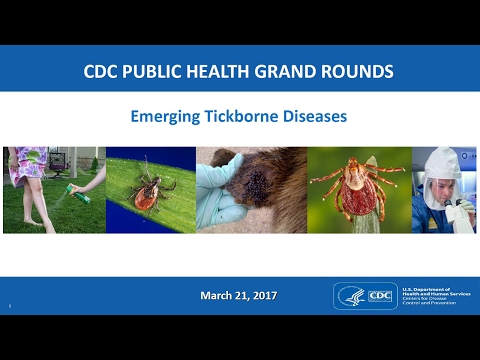In 2024, tick borne diseases present a growing risk that demands our attention. As we’ve seen in recent years, these diseases are becoming more prevalent, fueled by changes in climate, which push ticks into new territories. The Centers for Disease Control and Prevention (CDC) reports a notable increase in cases across regions, particularly where they were once rare. This is alarming because, with the spread of these pests, more people than ever face the serious health risks these diseases bring.
So, what exactly are these tick borne troubles? The usual suspects include Lyme disease, Rocky Mountain spotted fever, and several lesser-known but equally concerning conditions. As bodies of research grow around bacterial infections in Japan and the complexities of these illnesses become clearer, it’s imperative we stay educated. Awareness can be your best defense in maintaining optimal health while pushing toward your fitness goals.

Top 7 Alarming Tick Borne Diseases Making Headlines in 2024
1. Lyme Disease
Lyme disease tops the charts as the most reported tick borne illness in the U.S. It’s caused by the Borrelia burgdorferi bacteria. With an estimated 300,000 new cases annually, it’s no surprise health authorities are calling it an epidemic. Symptoms can range from a characteristic skin rash looking like a bullseye to severe joint pain, and if left untreated, it can wreak havoc on your nervous system.
2. Babesiosis
You might think you’ve got the flu, but it could be babesiosis! This malaria-like illness caused by parasites infecting red blood cells is sneaky. The CDC has noted a troubling uptick in cases, especially in the Northeastern U.S., where it’s often found along with Lyme disease. Beware, because like viral infection symptoms, the signs can overlap, leading to misdiagnoses.
3. Anaplasmosis
Another rising concern is anaplasmosis. This disease emerges from the Anaplasma phagocytophilum bacterium, presenting flu-like symptoms such as fever and muscle pain. The difficulty of early detection adds to its danger, and current findings from the CDC hint at a spike in cases particularly in regions peppered with deer populations.
4. Rocky Mountain Spotted Fever (RMSF)
Don’t let the name fool you. Rocky Mountain Spotted Fever isn’t confined to just the Rockies. This severe bacterial infection can lead to life-threatening complications, with symptoms arising in the form of fever and rash. Regions across southern states are seeing increasing incidents, which calls for greater public awareness and preventive actions.
5. Ehrlichiosis
Often appearing hand-in-hand with Lyme disease and RMSF, ehrlichiosis is spread by the Lone Star tick. This illness can cause flu-like symptoms—like fatigue and fever—and the latest CDC figures suggest an uptick in reports, specifically in southeastern states.
6. Disease of Porcine Reproductive and Respiratory Syndrome (PRRS) Virus
While primarily affecting our pig friends, the mutation of the PRRS virus has raised eyebrows regarding its potential transmission through ticks to humans. This highlights a crucial aspect—how interconnected animal and human health risks really are.
7. Tick Borne Relapsing Fever
Caused by different Borrelia species than those responsible for Lyme, tick borne relapsing fever results in recurring episodes of intense fever, chill, and muscle aches. Particularly prevalent in the western U.S., this disease sees more reported cases each year.

Evolving Patterns: Tick Borne Diseases and Their Complexity in 2024
The Interconnection With Other Health Risks
As tick borne diseases continue to rise, we can’t ignore their links to other health risks. For instance, recent studies suggest that spikes in E. coli outbreaks could connect to increased tick populations thriving in similar moist environments. If ticks are on the rise, these environmental issues can combine, complicating our public health responses.
Also, consider the viral infection symptoms overlap with those of tick diseases, creating a diagnostic nightmare. A 2023 study found that many physicians misdiagnosed early Lyme disease as merely viral, delaying crucial treatment time (who wants that when it’s about your health?).
A Global Perspective on Bacterial Infections
Looking abroad, countries like Japan face a surge in bacterial infections, including those caused by ticks. The Japanese Ministry of Health is currently weighing new vaccines while ramping up public awareness campaigns relating to Lyme-like infections. Clearly, no region is immune, and the global nature of tick borne diseases begs for attention.
The Unseen Challenge: Sexually Transmitted Fungal Infections
Tick borne diseases might also play a role in the rising incidence of sexually transmitted fungal infections. Both flourish in high-humidity conditions, complicating treatment for those affected. Especially for immunocompromised individuals suffering from tick-related issues, this interconnection can create additional hurdles to their recovery.
![Part 1: The Essentials of Ticks and Tick-Borne Diseases [Hot Topic]](https://www.chiseled-magazine.com/wp-content/cache/flying-press/DG2evJ-QO2Y-hqdefault.jpg)
Community and Health Initiatives to Combat Tick Borne Diseases
Local health departments are stepping up, launching education initiatives to combat tick borne diseases. Community workshops are popping up, demonstrating proper tick removal techniques and preventive measures. The idea is pretty straightforward: the more folks know, the better we can fight off this pesky enemy trying to ruin our health and fitness journeys.
Moreover, innovative partnerships with tech firms are in the air—think useful tick tracking apps that can give you real-time updates on tick activity in your area. Staying informed is invaluable, right?
Innovative Strategies and the Future
To tackle the alarming health risks that tick borne diseases bring, we need to invest smartly in research focusing on resistant strains and creating effective vaccines. Developing a rapid diagnosis test for Lyme disease could be a game-changer, allowing for quicker treatment and less severe complications.

Final Thoughts
As we sail through 2024, the intersection of tick borne diseases and broader health issues is too important to overlook. With the multi-faceted nature of these diseases, a collective effort from research groups, community engagement, and health policy must take center stage. It’s not just about understanding tick borne diseases. It’s about reshaping our strategies to protect our health and well-being. So let’s stay informed, proactive, and ready to tackle this ever-present threat head-on. When you work hard to get shredded and achieve those ripped six-packs, don’t let something like a tick spoil the gains!
Stay fit, stay informed, and take charge of your health!
![Part 2: Tick-Borne Diseases Other Than Lyme Disease [Hot Topic]](https://www.chiseled-magazine.com/wp-content/cache/flying-press/WiwLtNR-LeE-hqdefault.jpg)
Tick Borne Diseases: Fun Trivia and Interesting Facts
The Not-So-Social Insects
Did you know that ticks are more than just pesky little critters? These tiny arachnids are expert hitchhikers, often clinging to animals or humans as they traverse the great outdoors. One fascinating fact is that they’ve been around for over 100 million years! Talk about longevity—almost as impressive as the way human perceptions of time sometimes get skewed by what experts call time blindness. Ticks thrive in various environments, but they particularly love humid areas where they can hang out low and wait for their next meal. Speaking of meals, if you want to savor the outdoors without inviting ticks to dinner, consider sporting a rugged men ‘s sun hat during your next hike.
The Dirty Dozen of Tick Borne Diseases
When it comes to tick borne diseases, there are over a dozen known varieties that can seriously affect your health! Lyme disease is probably the most famous, spreading rapidly in recent years. However, it’s not the only player in this game; diseases like Rocky Mountain spotted fever and anaplasmosis can also wreak havoc. It’s a lot to digest, much like finding ways to improve your credit score with Creditkarma.com. What’s alarming is that these diseases aren’t just confined to rural areas anymore; suburban and urban settings are seeing a rise in tick populations, which is enough to send shivers down anyone’s spine.
The Importance of Prevention
Prevention is key when it comes to tackling tick borne diseases. Wearing repellent, checking for ticks after being outdoors, and using tools like a water softener system For home can help reduce exposure. And if you find yourself dealing with those annoying little jerks in your yard, consider making your garden less inviting for ticks. They can’t resist a good buffet, whether it’s your pet or your prized dracaena Trifasciata. If you do happen to get bitten and start feeling under the weather, don’t hesitate to reach for ciprofloxacin 500 — it could be a crucial ally against infections.
Tick borne diseases are a serious health risk that we can’t afford to ignore. Whether you’re out hiking, gardening, or just enjoying the great outdoors, arming yourself with knowledge about these pesky invaders can help you stay safe and healthy. So next time you’re out and about, keep these tips in your back pocket and enjoy nature worry-free!



























